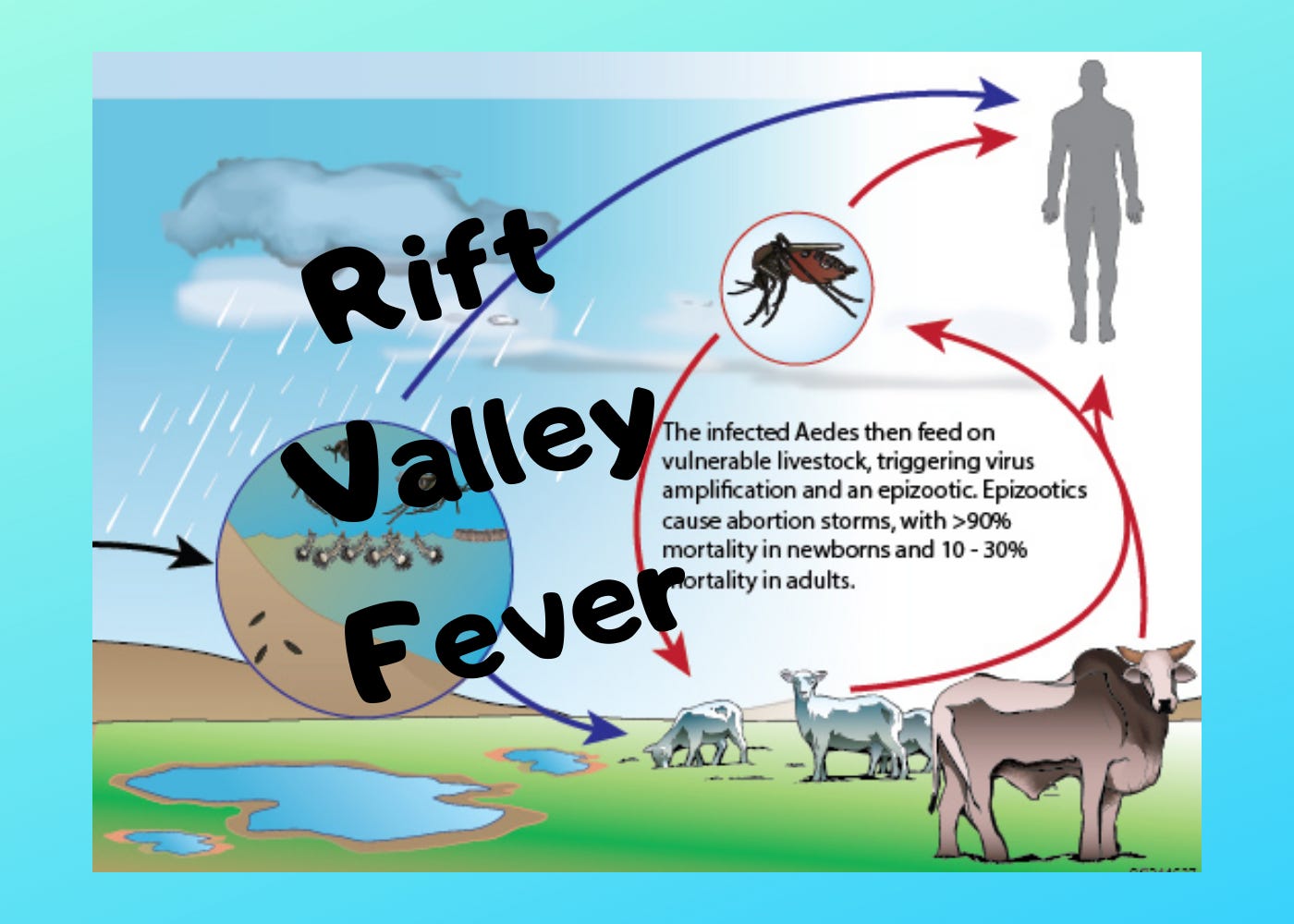Rift Valley fever cases reported in Uganda and Kenya
No evidence the outbreaks are epi-linked, officials say
Uganda
The Uganda Ministry of Health (MOH) reported last week on a confirmed human case of Rift Valley fever (RVF) in Nakaseke district in central Uganda.
The case was a 45-year-old male butcher with a history of direct contact with dead animals.
He presented at Nakaseke district hospital with symptoms of fever, headache, loss of appetite, muscle pain, weakness, joint pain, confusion and nose bleeding.
He tested positive for RVF by PCR at the Uganda Virus Research Institute (UVRI).
He died on January 14, 2024.
In 2023, Uganda reported 20 RVF cases and four deaths from Mbarara district in southwest Uganda.
Kenya
Last Wednesday, the Kenya Ministry of Health (MOH) reported a RVF case in Marsabit county in northern Kenya.
The 38-year-old female presented fever and general body weakness at Marsabit Central Referral Hospital. A blood sample tested by PCR was positive for RVF by the Kenya Medical Research Institute.
In Kenta, the last RVF outbreak was reported in 2021 when 32 cases and 11 deaths were reported from Garissa and Isiolo counties.
Officials say their is no evidence the outbreaks are epi-linked.
Officials from both countries deployed rapid response teams to conduct epidemiological investigations.
Rift Valley fever
Rift Valley Fever is mosquito-borne virus that is endemic in parts of Africa. It primarily infects animals like sheep, cattle and goats and it can have an economic impact on a community due to the loss of livestock.
Subscribe to Outbreak News TV on YouTube
Humans get infected through contact with infected animal blood or organs. Butchering and slaughtering of animals is a primary cause of transmission to humans. Certain occupations are at a higher risk of getting Rift Valley Fever like farmers, herders and veterinarians.
It can also be transmitted to humans through mosquito bites and the bites of blood-sucking flies.
Most cases of Rift Valley Fever are mild and symptoms include fever, headaches and muscle pain. However, a small percentage of people can get serious disease which includes retinitis, encephalitis and a hemorrhagic fever. Fatalities happen in less than 1 percent of those infected.






Thank you for providing this information as a public service!